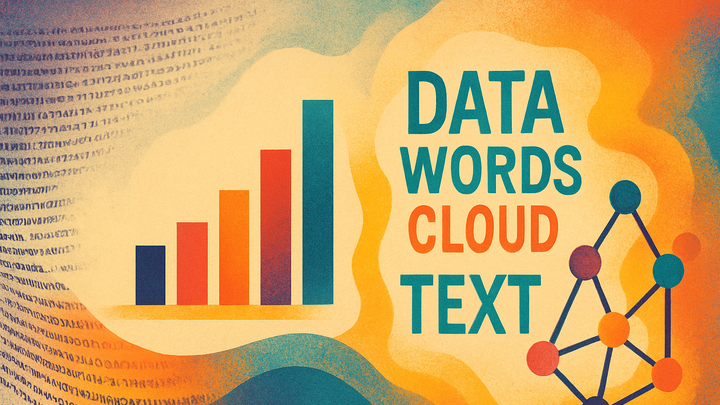Published on 2025-06-28T04:12:59Z
What is Text Analytics? Examples with plainSignal and GA4
Text Analytics is the discipline of processing and analyzing unstructured textual data to uncover insights, patterns, and trends that inform decision-making. By leveraging natural language processing (NLP), statistical analysis, and machine learning, text analytics transforms free-form text—like customer reviews, social media posts, survey responses, and support tickets—into structured data. This structured data can then be visualized in dashboards, used to drive automated workflows, or feed predictive models. In the analytics industry, Text Analytics bridges the gap between human language and quantitative analysis, enabling organizations to measure sentiment, classify content, and detect emerging topics at scale. Tools such as plainSignal and Google Analytics 4 can capture text input events, while dedicated NLP platforms perform deeper semantic analysis.
Text analytics
Text Analytics applies algorithms and NLP to extract insights from unstructured text data for analysis, sentiment, and classification.
Overview of Text Analytics
Text Analytics involves applying computational techniques to derive structured insights from unstructured text. It spans multiple processes, from basic parsing and tokenization to advanced semantic analysis. Organizations use it to quantify qualitative data, revealing customer sentiment, topic trends, and key phrases. This foundation empowers deeper analytics, enhances reporting, and supports AI-driven applications.
-
Definition
Text Analytics, also known as text mining, is the process of extracting meaningful patterns and insights from large volumes of textual data using NLP and statistical methods.
-
Core techniques
Common techniques include tokenization, stemming, lemmatization, part-of-speech tagging, named entity recognition, and sentiment analysis.
-
Tokenization
Breaking text into words or phrases to prepare for analysis.
-
Stemming & lemmatization
Reducing words to their root forms to unify word variants.
-
Named entity recognition
Identifying proper nouns like people, organizations, or locations.
-
Sentiment analysis
Determining the emotional tone or polarity of text.
-
Applications in Analytics
Text Analytics powers a range of analytics use cases by converting free-form text into quantifiable insights. It helps businesses monitor brand reputation, categorize content, and surface actionable trends from customer interactions.
-
Customer feedback analysis
Analyze reviews, surveys, and support tickets to gauge customer sentiment, discover pain points, and prioritize product improvements.
-
Use case example
Evaluating Net Promoter Score comments to identify frequently mentioned issues.
-
Metrics
Sentiment distribution, topic frequency, and sentiment trend lines over time.
-
-
Social media monitoring
Track brand mentions and trending topics across social platforms to understand audience perception and emerging discussions.
-
Tools
Integrations with Twitter, Facebook, and Instagram APIs for real-time data.
-
Outcomes
Detecting viral posts, sentiment shifts, and influencer impact.
-
-
Content categorization
Automatically classify documents, articles, or comments into predefined topics, tags, or sentiment buckets.
-
Methodology
Training supervised models on labeled datasets to assign categories.
-
Systems
News topic classification, spam detection, or support ticket routing.
-
Implementing Text Analytics with SaaS Tools
Leveraging SaaS analytics platforms streamlines the collection and processing of text-based events. Here, we look at how plainSignal and Google Analytics 4 can capture textual data for analysis.
-
Using PlainSignal for text input events
plainSignal offers a lightweight, cookie-free way to capture text-based user interactions—such as search queries or form submissions—while respecting privacy regulations.
-
Tracking script
Add this snippet to your HTML to enable plainSignal tracking:
<link rel="preconnect" href="//eu.plainsignal.com/" crossorigin /> <script defer data-do="yourwebsitedomain.com" data-id="0GQV1xmtzQQ" data-api="//eu.plainsignal.com" src="//cdn.plainsignal.com/plainsignal-min.js"></script> -
Event configuration
Configure custom events in the plainSignal dashboard to capture specific text fields, such as search queries or feedback messages.
-
-
Configuring GA4 for text analytics
Google Analytics 4 can record custom events containing text parameters, enabling basic text analytics on user interactions captured on your website.
-
GA4 setup
Ensure you have the gtag.js snippet with your Measurement ID included in your pages. This initializes GA4 tracking.
-
Event tracking example
Use the following code to send a text input value as a custom event:
gtag('event', 'text_submit', { 'event_category': 'form', 'event_label': 'message_input', 'message': document.getElementById('contact_message').value });
-
Best Practices and Considerations
Implementing Text Analytics responsibly and effectively involves focusing on data quality, privacy, and selecting the right tools for your needs.
-
Data privacy and compliance
Protect user privacy by obtaining consent, anonymizing data, and adhering to regulations like GDPR and CCPA.
-
User consent
Obtain explicit permission before collecting or analyzing user-generated text.
-
Anonymization
Mask or remove personally identifiable information to safeguard user identities.
-
-
Data preprocessing
Clean and normalize text data to improve model accuracy and reduce noise before analysis.
-
Tokenization & cleaning
Split text into tokens and remove punctuation, HTML tags, or irrelevant characters.
-
Stop-word removal
Remove common words (e.g., ‘the’, ‘and’) that do not contribute meaningful information.
-
Normalization
Convert text to lowercase, handle accents, and expand contractions for consistency.
-
-
Tool selection
Choose platforms based on factors like scalability, integration capabilities, and depth of NLP features.
-
Scalability
Ensure the solution can handle your expected data volume and processing demands.
-
Integration
Verify compatibility with your existing data sources, BI tools, and workflow systems.
-
